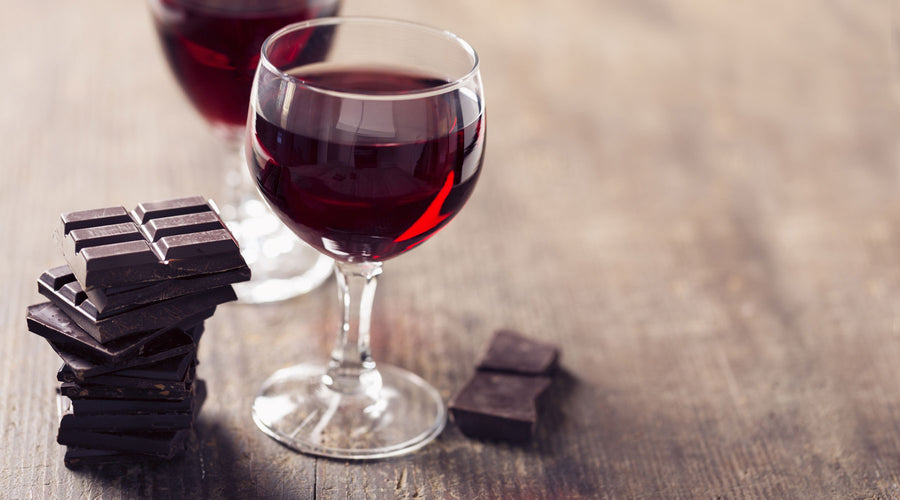Balancing your Bitterness
The mention of the word Tannin in wine discussions, what really is it and is it important? Tannin, or tannic acid, is found predominantly in red wine. It is seldomly found in white wines such as Chardonnay if the wine in question is kept in an oak barrel for an extended period of time, this is not often the case but it is worth mentioning. In most circumstances however, tannin is derived from grape skins and oak barrels in which red wines are often aged in. It is worth relaying that the juice from most red grapes is clear. The colour in red wine comes from the skins of the grapes. This is no surprise given that there are hundreds of phenolic compounds which include tannin that is found in the skins of red grapes.
What does Tannin taste like? It is often described as being bitter and feels astringent on the palate. Many of us perceive tannin from grape skins in the front of our mouth, while tannin from oak aging is tasted and felt in the back of the mouth, on the tongue, and soft palate.
Tannin also enters the winemaking equation if carbonic maceration or whole cluster fermentation is involved. With either, the stems become a part of the fermentation process and imparts a green, stemmy tannin part to the overall profile of the wine.
One of the key sensations with tannin in red wine is that it dries out the palate, which is not a surprise. Tannin is a preservative as well which is in part responsible for red wine having the potential to age. Tannin is also found in other beverages and foods. Tea, coffee, and chocolate all have a fair amount of tannin. If you leave a tea bag in a cup of just-boiled water for 20 minutes or so, the tea will be almost unbearably too bitter to drink. The same goes for strong coffee, which is why many people reach for cream and sugar to take the edge off the inherent bitterness. The concentrated high percentage dark chocolate is also bitter from tannin, hence why most chocolate has sugar added.
With time, the tannin molecules in wine form microscopic chains. As a wine ages, or more tannin is added through various means, the chains of molecules get longer. We perceive a wine with long chains of tannin molecules as being “smooth” on the palate. This aspect is very important for wine drinkers. When a large survey of wine drinker’s is asked what their favorite red wine descriptor is, the majority of people say smooth.
As aforementioned, these long chains of tannin molecules form over time as wine ages in barrel or in the bottle. Winemakers, however, can do any number of things to speed up the process. A red wine can be fermented in barrel, whereby it takes on more tannin earlier during primary fermentation and malolactic in the secondary fermentation. Oak chips, which are considerably less expensive than oak barrels, can also be added to the wine as it evolves over time, raising the tannin level.
Each of us have a unique tolerance to tannin. That also goes for the other structural elements in wine (acidity, alcohol, and phenolic bitterness). This is especially true with tannin. There is actually a study on the effects of wine and tea tannin and oxidation in the body. In the tests, wine tannin resists oxidation whereas tea tannin did not. In other words, it is an antioxidant. Some people avoid red wine altogether because of their sensitivity to tannin. Others complain that drinking red wine gives them headaches. The cause of those headaches could be anything from being dehydrated when drinking to reacting to the histamines in a red wine (or it is the alcohol itself).
Some cultures seem to have a higher overall threshold for tannin than others. For instance, the Chinese culture tends to drink tea from the time they are children and they grow up drinking a naturally tannic beverage. With doing so, they almost become immune to most bitterness and astringency over time. For this reason, the common or cliché food and wine pairings of what wine goes with what food has to be tempered due to a culture’s habitual tendencies to the elements found in wine.
Red wines with higher tannins need time to rest in a bottle. In the past, one would ideally establish a home cellar for just this reason, to age certain wines under the right conditions with the intent of being able to enjoy them years later when they reached maturity (or become smoother). Few people now have the space or wherewithal for a cellar nor the patience to wait for that matter. No surprise that most ageable red wines are now being enjoyed long before maturity. This is why certain strategies are encouraged ‘if’ one is going to enjoy a wine before it’s time (so to speak): First, consider opening and decanting the wine at least an hour before enjoying it. If it is a tannic red like a Barolo for instance, you may even consider pouring the wine into a larger red wine glass and letting it sit for at least an hour. Aside from decanting and pre-pouring, matching the right dish with a young tannic red wine may prove to be more of an enjoyable experience. A combination of protein, fat, and salt takes the edge off a young tannic wine. Even some intense cooking methods like grilling also helps to match the intensity of a young tannic wine.
With our better understanding of Tannin, we would be remiss if we did not mention the most important aspect in wine which remains: a balance in the wine. The main components that comprise to make a balanced wine are good fruit, lovely acidity with the addition of integrated smooth tannins in red wine. A red wine that is not well-balanced tends to lack fruit, which may be possibly over-oaked, or it is just too tannic (so many variables can come into play). Now that we have a better appreciation of Tannin, there really is no need to be bitter ever again!





